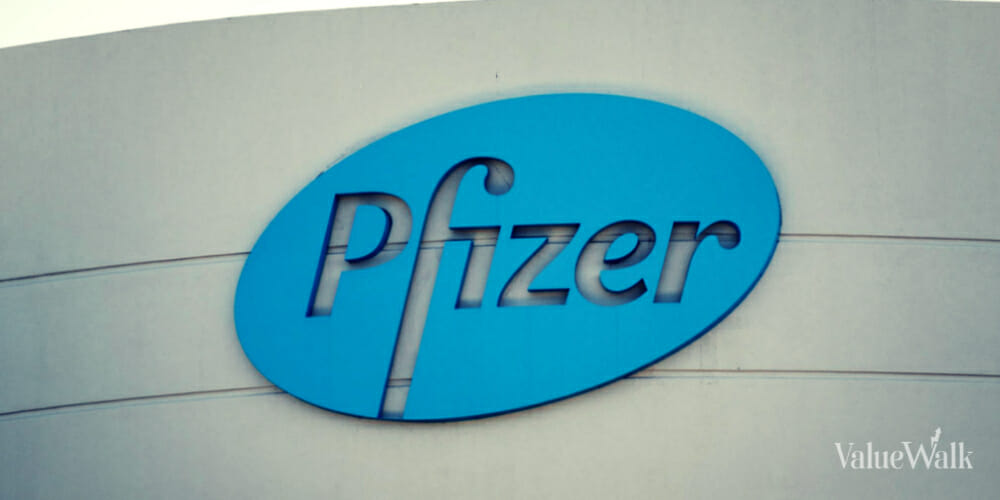Pfizer (NYSE:PFE) stock is tumbling today, but that’s just a continuation of a downtrend that been in place all year long. It seems like no matter what happens with the rest of the market, Pfizer is doomed to remain an outcast on Wall Street.
On the other hand, a pharmaceutical giant like Pfizer isn’t meant to be in the doghouse forever. Hence, audacious dip buyers can consider whether Pfizer stock is a good value or just a falling knife. When all is said and done, they’ll find a generally solid company that’s not perfect but still has comeback potential.
A slew of good news for Pfizer
It’s typical of 2023 that a company like Pfizer can have one positive development after another, and yet, its stock just can’t seem to get off the ground. Perhaps the market is too busy rotating into artificial intelligence (AI) and “Magnificent Seven” technology stocks to focus its attention on Pfizer.
Furthermore, the market isn’t very concerned about value and yield in 2023. That’s a shame, as Pfizer has a GAAP-measured, trailing 12-month price-to-earnings (P/E) ratio of 15.59, versus the sector median P/E ratio of 31.86. Thus, value-focused investors really ought to take a look at PFE stock.
Pfizer also offers a generous forward annual dividend yield of 5.7%, compared to the average dividend yield of around 1.5% for the healthcare sector. Thus, even though Pfizer isn’t a “Magnificent Seven” company, there are some magnificent aspects of Pfizer stock to consider.
There’s also no shortage of positive news pertaining to Pfizer. First of all, Pfizer’s hemophilia treatment marstacimab demonstrated significant reductions in bleeding rates for hemophilia A and B patients. Additionally, the U.S. Food and Drug Administration (FDA) accepted Pfizer’s Biologics License Application (BLA) for the hemophelia drug.
The European Commission (EC) also granted conditional marketing authorization for Pfizer’s ELREXFIO (elranatamab), a proposed treatment for certain patients with multiple myeloma.
According to Pfizer Chief Oncology Research and Development Officer and Executive Vice President Chris Boshoff, over 50,000 Europeans are diagnosed with multiple myeloma every year. Consequently, there’s a significant market opportunity for Pfizer in the wake of the conditional ELREXFIO authorization.
Perhaps the best news of all though is that Pfizer now has full U.S. regulatory approval to acquire cancer-treatment specialist Seagen (NASDAQ:SGEN). The timeline is moving forward quickly, as Pfizer expects to close the acquisition tomorrow.
This acquisition will necessitate some organizational changes at Pfizer. In particular, the company plans to create an business unit called the Pfizer Oncology Division. The new division will “integrate certain oncology commercial and R&D operations from” Pfizer and Seagen.
All in all, the Seagen acquisition should help Pfizer build out its cancer-treatment pipeline. It’s a win-win for all parties involved, but the market has scarcely responded to Pfizer’s positive press releases this year.
Pfizer stock drops on disappointing guidance
Here’s what’s causing PFE stock to slide 8% to 9% today. Pfizer just released its guidance for 2024, and evidently, investors aren’t too pleased with the numbers.
Analysts had expected sales of Pfizer’s COVID-19 vaccine Comirnaty to exceed $8 billion in 2024. Moreover, they anticipated that the company’s antiviral pill Paxlovid would generate an additional $5 billion in 2024 sales.
However, Pfizer’s current outlook calls for $8 billion in full-year 2024 revenue from Comirnaty and Paxlovid combined. In other words, Pfizer’s vaccine-revenue outlook is modest, and the market wants optimism, not modesty.
That’s not the only source of disappointment. Pfizer guided for 2024 revenue of $58.5 billion to $61.5 billion, while Wall Street was looking for $62.66 billion. Additionally, the company’s full-year outlook for adjusted earnings per share (EPS) stands at $2.05 to $2.25, falling far short of the analysts’ consensus estimate of $3.16 per share.
These guidance ranges are problematic in a time when the market demands nothing less than consistent top- and bottom-line growth. Have the “Magnificent Seven” companies spoiled investors to the point where they can’t tolerate a less-than-stellar outlook?
It’s a point worth considering, especially now that the market has priced in a worst-case scenario for Pfizer’s 2024 sales and earnings. If the company posts decent numbers in the coming year, there’s room for a recovery of epic proportions with PFE stock.
Of course, there’s no guarantee that this recovery hypothesis will actually pan out. Nevertheless, Pfizer stock is an intriguing contrarian play for the coming year since investors have already baked the expected disappointments into the pie. Thus, today might be a good day to establish a position in Pfizer stock — with a strategy of holding the shares for at least a year and collecting dividend payments along the way.





